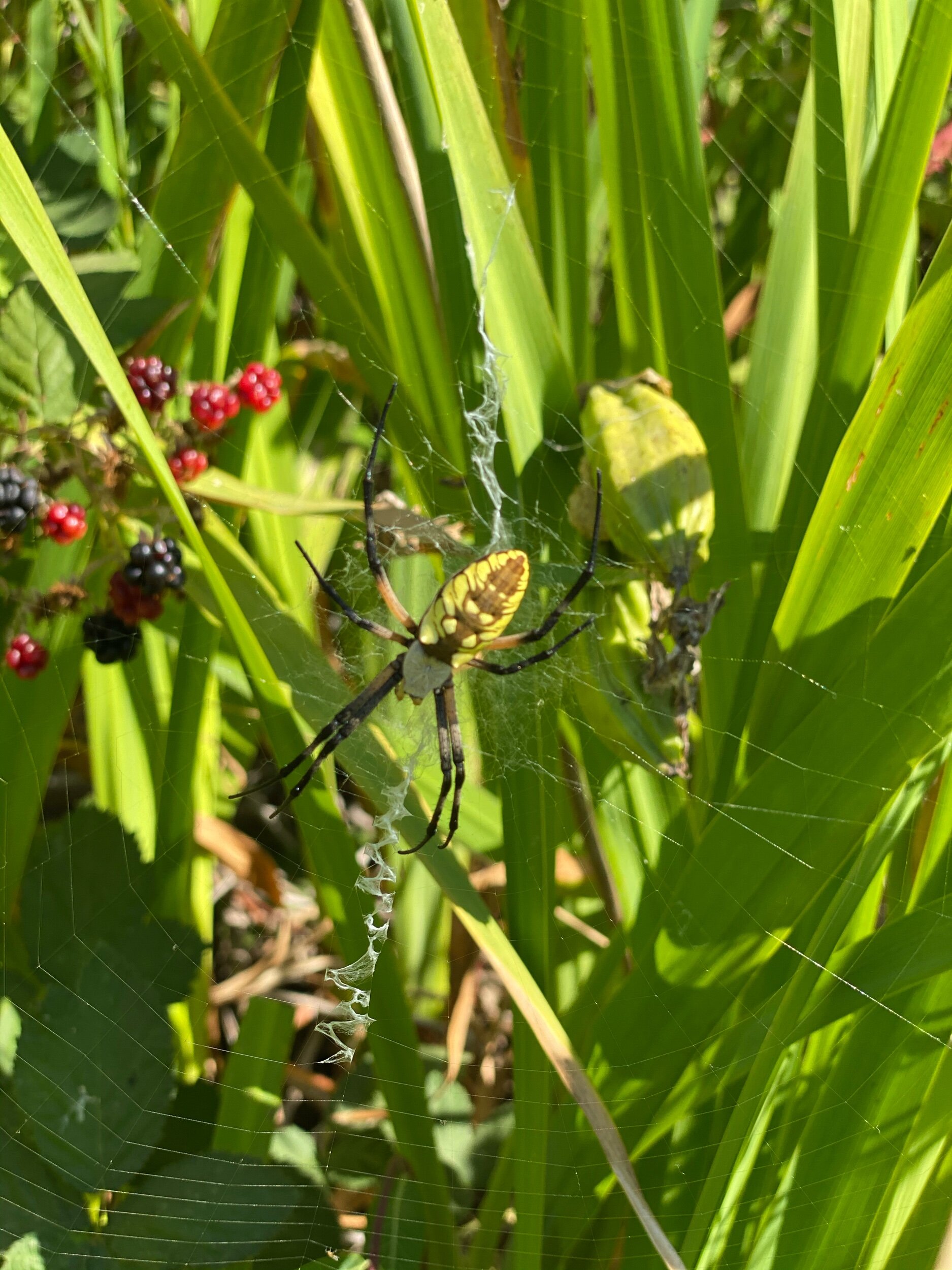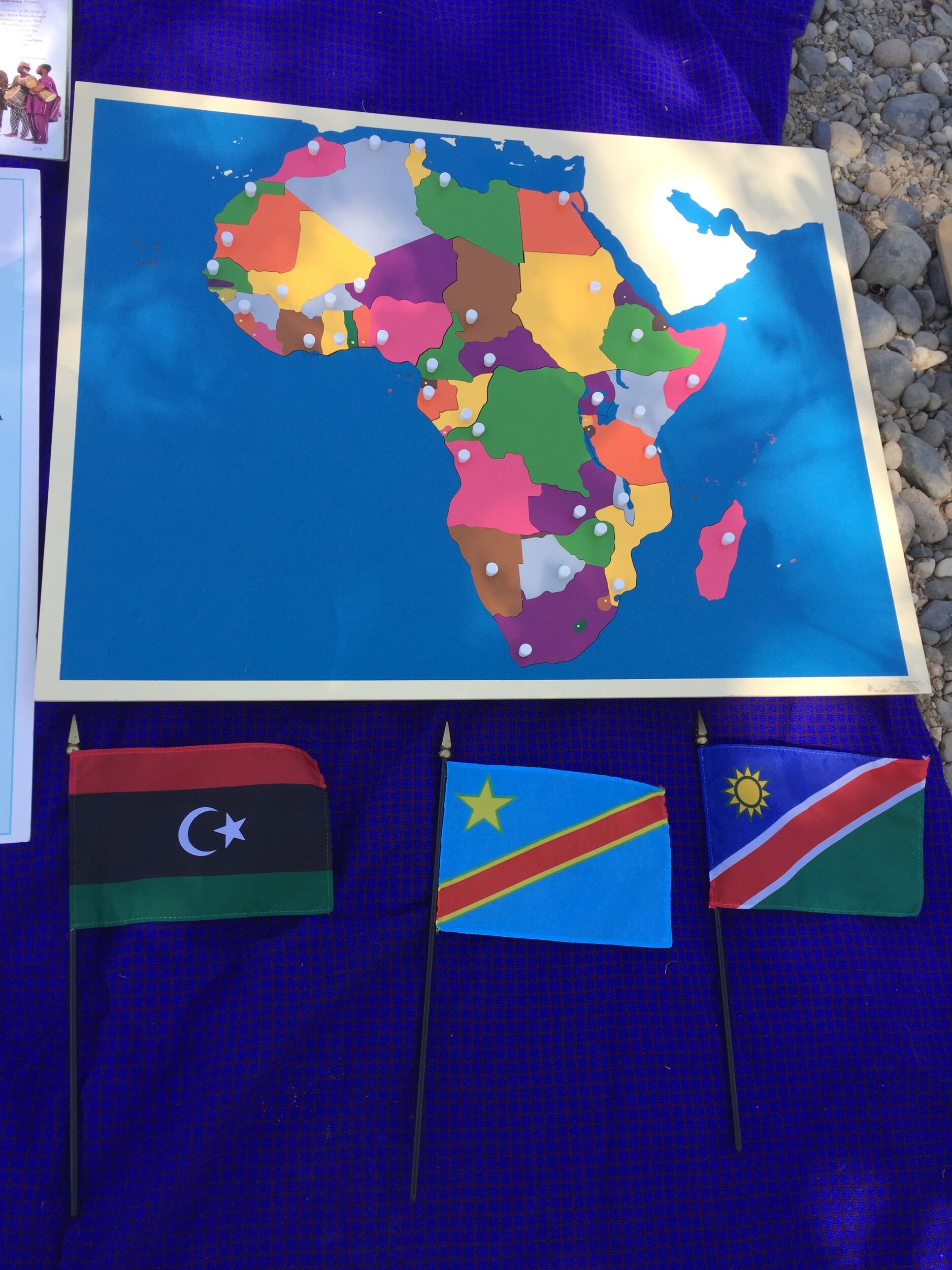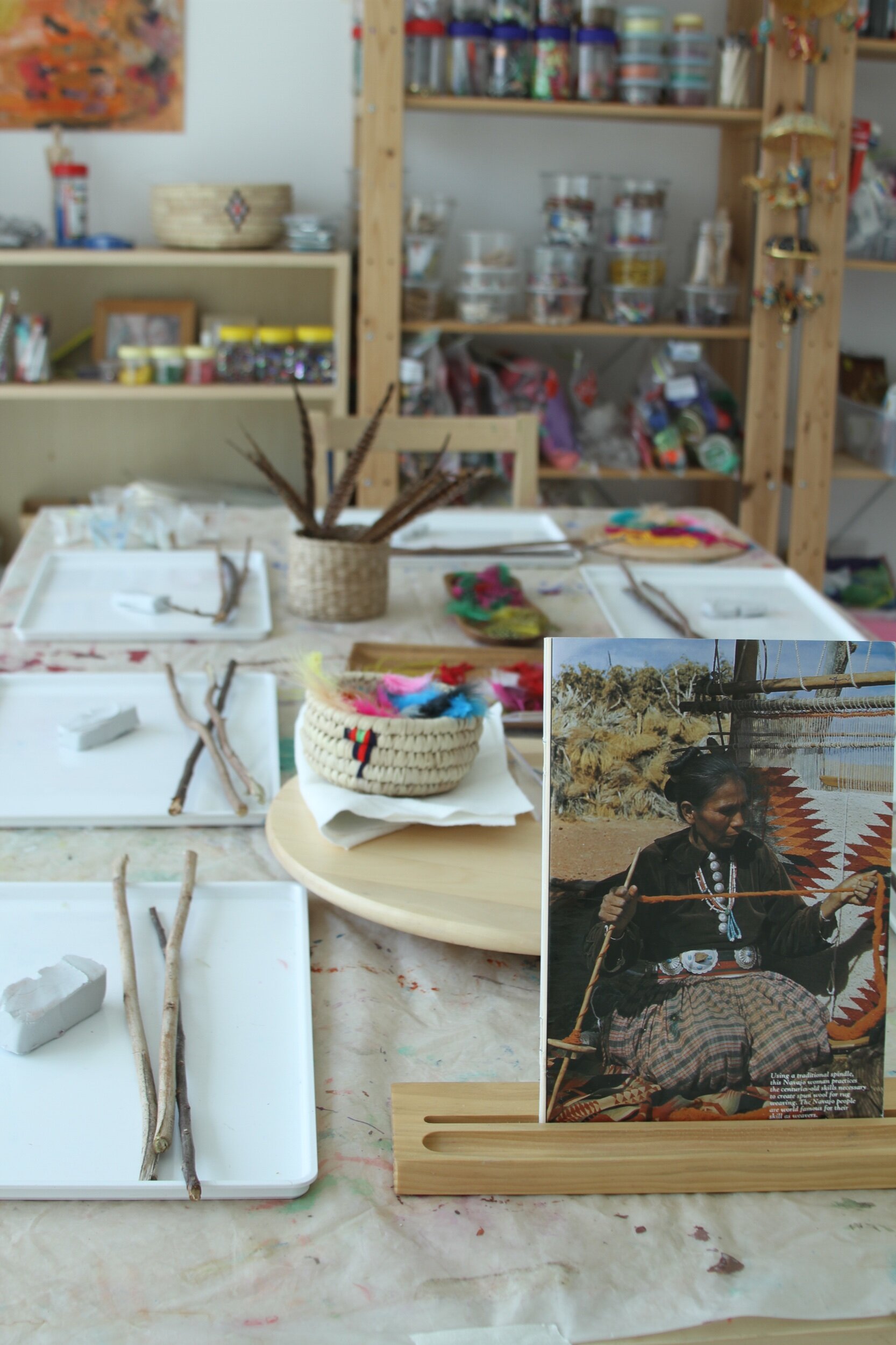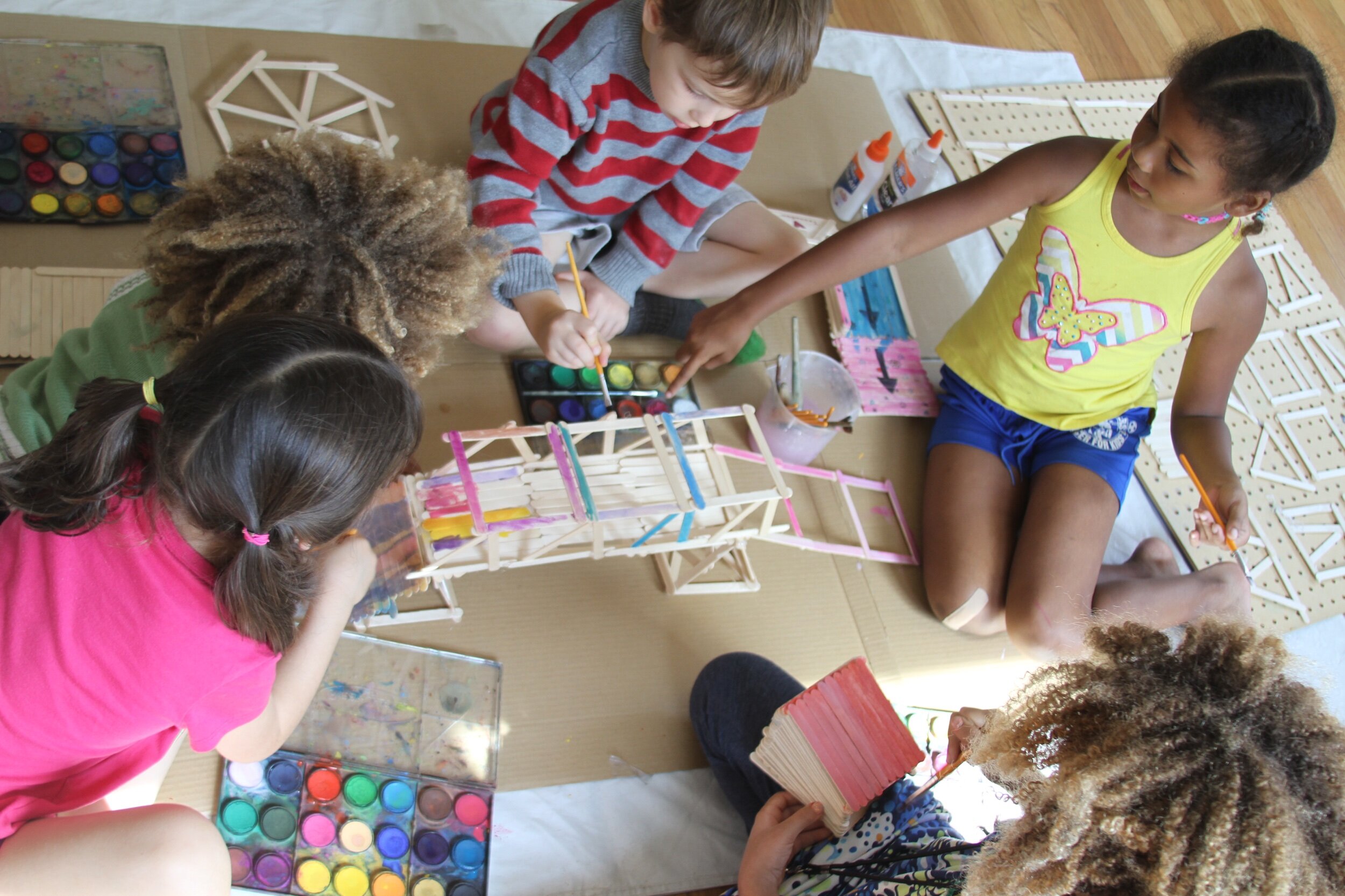Black Crown Collective
Curriculum Overview
At Black Crown Micro-School, we see how all disciplines of study are interconnected and dependent on one another. Below, you will find an overview of our curriculum at Black Crown in a segmented format. This serves as a guide to root our inquiry in deeper, thoughtful learning and to offer adults a progressive look at our education trajectory. We embrace the fact that the majority of our projects intersect at the cross section of many disciplines. We root our education in the study of geography, history, mathematics, language arts, life sciences, physical sciences, practical life skills, art, foreign language communication, music, movement and their connections to one another.
Dr. Montessori has inspired people around the world for over a century and she inspires us as well. A Montessori-inspired education bases curricular choices on observation of children in order to discover their needs. Long periods of concentration on purposeful work involving both the mind and the body heals the child mentally and physically. Some of the characteristics of a Montessori education include:
Multi-age learning groups
Cooperation and collaboration among students
Active, hands-on learning methods
Teachers who model the behaviors and values that they want children to emulate
Teachers who see themselves as a facilitators rather than instructors
Respect for each child’s individual learning style
Freedom of children to choose between learning activities
Guidance on positive behavior, authentic peace and conflict resolution
Helping students see connections between traditional subjects such as math, science, history, and language arts
Our day is filled with long blocks of project work time to engage in academic pursuits and field studies. Click the LEARN MORE buttons under each subject area to gain a more detailed glimpse at some of the topics we guide children in exploring.
Nature exploration
In our natural classroom we take an intimate look at how living things grow, reproduce, die, and decay in a continuous cycle of life. Encounters with nature form the basis of our studies in zoology, botany, ecology and geography. Our River Bend wildlife observations greatly influence the direction of our emergent curriculum and Montessori-inspired learning. This process of natural observation and the questions that arise plant the seeds for our inquiry-based approach to education.
Cosmic Studies
A cosmic education spans about 15 billion years and offers us a chance to explore the story of our universe, earth’s formation, how life developed, the story of written language and the development of mathematics.
“The secret of good teaching is to regard the child’s intelligence as a fertile field in which seeds may be sown, to grow under the heat of flaming imagination. Our aim is not only to make the child understand, and still less to force them to memorize, but so to touch their imagination as to enthuse them to their innermost core. We do not want complacent pupils, but eager ones. We seek to sow life in the child rather than theories, to help them in their growth, mental and emotional as well as physical, and for that we must offer grand and lofty ideas to the human mind.”
~Dr. Maria Montessori
Geography
At Black Crown, we explore the story of human kind and the story of nature as apart of our learning adventures into geography.
Through the study of geography, children can gain an appreciation of the world’s immense beauty, its fragile ecosystem, and the interdependence of it diverse human population. Because geography is not simply the study of the earth but also the people and other living creatures that inhabit the planet, the study of geography diverge into two focus areas: physical geography and cultural/political geography.
Physical geography studies the earth’s physical environment, including the natural and active processes that have formed, and continue to form, the earth’s features.
Cultural geography studies the specific people and places of various regions of the earth. We take a closer look at social, economic, historical, political, population, and urban geography in order to better understand the world’s societies. Our projects also lead us right back home to explore the place that we inhabit in our world.
History
At Black Crown Collective, our intention is to raise awareness of the interconnected nature of the greatest challenges of our current times by examining history and then actively pursuing possible solutions. In so doing, the aim of the history curriculum at Black Crown is to inspire greater cross-cultural understanding in the next generation. Our history program engages students, fosters curiosity and encourages critical thinking.
In order to achieve this goal, we embrace a people’s history that flips the dominant script and takes a closer look at history from the perspective of the workers, the soldiers, the invaded so that we can begin to view society more fully, more accurately. The more clearly we see the past, the more clearly we’ll see the present — and be equipped to improve it.
Language arts
The language arts curriculum at Black Crown Collective builds a love of language and deeply immerses children in the world of reading and writing. As we guide children on their personalized journey to becoming avid writers and readers we explore penmanship, reading, word study, writing mechanics, grammar, sentence analysis, spelling, vocabulary, literary elements, creative writing and research skills. We also explore the history of the development of language.
As Montessori notes, “Language is the central point of difference between the human species and all others. Language lies at the root of that transformation of the environment that we call civilization. Language is an instrument of collective thought.”
-Dr. Maria Montessori, The Absorbent Mind
Mathematics
People could not invent, create, discover or construct without using the fundamental principles of mathematics. Concrete Montessori math materials allow children to satisfy their curiosity about whole numbers, fractions and geometry in interesting ways.
Learning mathematics comes more easily when children work with concrete educational materials that graphically show what is taking place in a given mathematical process. Children use a series of beautifully and intelligently sculpted materials to proceed through several levels of abstraction beginning with basic mathematical foundations to increasing levels of abstraction.
art
Art and Creative Expression: Art is introduced at this level in stimulating and creative ways, both in small groups with music and lessons with art. The goal of the art curriculum is to foster self-expression, concentration, development of gross/fine motor skills, and refinement of the senses.
The fine arts are incorporated in many other areas of the atelier. Children are encouraged to express themselves creatively through the arts. Special attention is given to the importance of the hand-brain connection and its positive impact on learning. Our children have access to an open studio or atelier for work with clay, paints, charcoal, pencils, and many more artistic instructional materials.
EXPLORING AND CREATING: Exploration and creative expression are fostered through various media available in the atelier: coloring, drawing, painting at an easel, watercolor painting, clay/sculpture, collage, knitting, sewing, and weaving.
ARTISTIC APPRECIATION: Children are encouraged to look at their own work and appreciate the art works of revolutionary artists as well.
zoology
At Black Crown we nourish the fascination of children in the natural world that surrounds us with regular observation of the actual living world around us in our nature-based classroom. Apart of our natural sciences explorations include the scientific study of animals known as zoology.
We encourage observation by sitting quietly and patiently and observing natural phenomena unfold before us throughout the seasons. Our study of zoology primarily focuses on animal anatomy, basic classification, adaptations.
Botany
As we take a closer look into the natural sciences, we dig deeper into the scientific study of plants, botany. The focus of the botany investigations is to honor children’s fascination about what plants do, as well as an understanding of why plants are so important to the earth and to humans. We study plant identification, plant structures and functions, and human-plant interactions.
In our nature-based classroom, children make an early connection to trees and flowers. We believe that children in communities that live close to the land have a natural appreciation or it and often maintain this connection as they grow.
Chemistry
Science is the study of the natural world. Students begin by learning to be a scientist by studying measuring and instruments, observing and recording, and conducting investigations. They then use this knowledge to study energy, Botany, Chemistry, Technology, Astronomy, Earth Science, Zoology, Food Science and Ecology.
Energy
Science is the study of the natural world. Students begin by learning to be a scientist by studying measuring and instruments, observing and recording, and conducting investigations. They then use this knowledge to study energy, Botany, Chemistry, Technology, Astronomy, Earth Science, Zoology, Food Science and Ecology.
Technology
Science is the study of the natural world. Students begin by learning to be a scientist by studying measuring and instruments, observing and recording, and conducting investigations. They then use this knowledge to study energy, Botany, Chemistry, Technology, Astronomy, Earth Science, Zoology, Food Science and Ecology.
Astronomy
Science is the study of the natural world. Students begin by learning to be a scientist by studying measuring and instruments, observing and recording, and conducting investigations. They then use this knowledge to study energy, Botany, Chemistry, Technology, Astronomy, Earth Science, Zoology, Food Science and Ecology.
Earth Science
Science is the study of the natural world. Students begin by learning to be a scientist by studying measuring and instruments, observing and recording, and conducting investigations. They then use this knowledge to study energy, Botany, Chemistry, Technology, Astronomy, Earth Science, Zoology, Food Science and Ecology.
food science
Science is the study of the natural world. Children begin by learning to be a scientist by studying measuring and instruments, observing and recording, and conducting investigations. They then use this knowledge to study Energy, Botany, Chemistry, Technology, Astronomy, Earth Science, Zoology, Food Science and Ecology.
ecology
We discover the fundamentals of ecology through activities, projects, personalized research and field studies in our local habitat. We are introduced to the intricacies of nature with this colorful study of ecology.
Children explore the biotic and abiotic elements necessary in each land and water biome. Based on the World Wildlife Fund biome classification system, students investigate how each class of animal has adapted to their environment; as well as study some animals that are on the endangered list, how they fit into the food web, and deduct some of the causes for their status. We thoughtfully discover the interconnectedness of each biome and come to understand our responsibility in maintaining this balance.
Music
We have been so fortunate to have been blessed by the melodic Haitian rhythms of Jeff Pierre Drums in the past. We also make joyful music with another company specializing in dance and drumming from West Africa, the Congo and the Caribbean. Fenix Drum and Dance Company highlights the richness and complexity of dance and music of the African Diaspora. Our dance and drum journey begins in Africa then travels across the ocean to to the Caribbean and the Americas.
Piano lessons are offered in a child-led, virtual, self-guided format. The Hoffman Method, grounded in child development and learning theory, teaches kids to play the piano both by ear and sight. It begins with a foundation in making music by earand then blossoms into a complete musical education including solfège, dictation, composition, improvisation, sight reading, music theory, and more.
Practical Life Skills


















